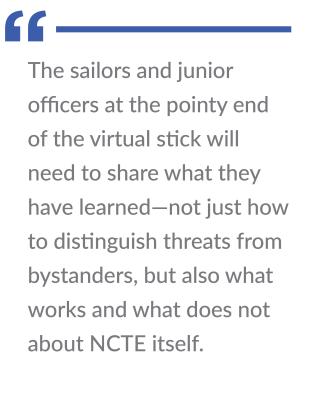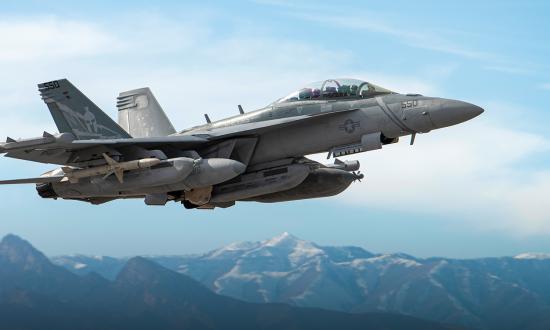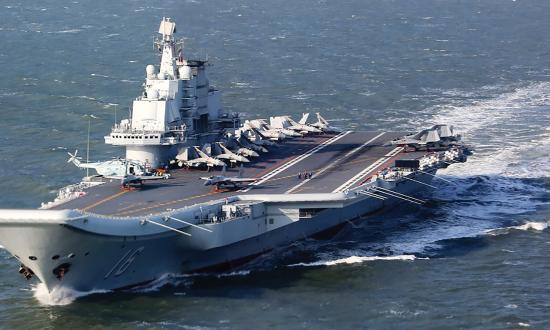Eastern Shipbuilding of Panama City, Florida, expects to christen the future Argus (WMSM-915), the first Coast Guard offshore patrol cutter (OPC), later this year. The Coast Guard calls the OPC the service’s “highest investment priority,” but the program has suffered several fits and starts. Victories may be in sight, however, with the installation of critical combat systems now to be completed ahead of schedule and an award for hulls 5 through 15 announced in July.
The first good news came in May, when the Coast Guard modified its contract with designer and manufacturer Eastern Shipbuilding to install the cutter’s ATHENA combat and radar system. The system originally was scheduled to be installed after the cutter’s delivery in late 2022 or early 2023, but the Navy (which owns the Coast Guard’s combat systems and weapons larger than .50-caliber machine guns) and manufacturer Leonardo completed development, integration, and testing ahead of the Argus’s completion.
Eastern Shipbuilding is constructing the first four OPCs—the lead ship Argus plus the Chase (WMSM-916), Ingham (WMSM-917), and Rush (WMSM-918). The Chase’s construction is well underway, and the Ingham’s keel was authenticated at a ceremony on 15 July. The OPCs are also known as the Heritage class because they are named for famous cutters of the past. Eastern, the ship’s designer, originally was awarded a contract for the first 9 OPCs (out of 25), but problems in the shipyard following hurricane damage caused construction to slip. The Coast Guard took the unusual step of rebidding the contract and on 1 July announced that Austal USA would build the next 11 ships at a new facility in Mobile, Alabama.
The Coast Guard reports the 4,520-ton cutters have a length of 360 feet, a beam of 54 feet, and a draft of 17 feet. With an endurance of 60 days and a crew of 126, the ships can maintain a sustained speed of 22.5 knots, with a range of about 10,200 nautical miles at a more economical 14 knots. The first three are all under construction, and Eastern has begun ordering long-lead-time components for the Rush.
Size and performance numbers make the OPCs more like frigates than typical offshore patrol vessels, but the armament is more in keeping with a coast guard’s capability than a navy’s. The ship is shorter than the service’s national security cutters (360 feet versus 418) but has essentially the same displacement. Excess space and energy capacity in the baseline design could make it a candidate for upgunning—if the Navy should ever decide a design such as the OPC fits in a future high-low mix.
Navy Continuous Training Environment Moving Forward
The Navy has taken the next step to improve its large-scale live, virtual, and constructive (LVC) training with the June award of a roughly $300 million contract to Mantech to manage the Navy Continuous Training Environment (NCTE). As is more or less standard these days, the award reportedly was protested to the Government Accountability Office, delaying an official release, but Mantech posted a job announcement for an NCTE contract manager online 6 July. A previous $248 million contract for software system architecture was awarded to Alion in 2021, but the Mantech contract should take NCTE from an experiment to a functional part of Navy training.
The Navy has been employing a variety of LVC tools since about 2004, when the Tactical Training Group Pacific began employing its Distributed Training Control Center. In December 2009, then–deputy commander, U.S. Fleet Forces Command, Vice Admiral Peter Daly wrote in Proceedings about a multicontinent fleet synthetic training event that included the Eisenhower Strike Group’s composite training unit exercise. (Admiral Daly, retired, is now the Naval Institute’s chief executive officer.)
NCTE “consists of networks, simulations, simulation routing equipment, data translation devices and live training range systems used together to create a realistic LVC training environment,” that provide “an integrated and secure training environment that can generate a variety of situations that might not be available in a live exercise but should be expected at sea, including scenarios with multiple ships and aircraft,” according to the Naval Surface Warfare Center, Port Hueneme Division. The 2021 Large Scale Exercise used NCTE to connect forces on both North American U.S. coasts with those in Europe and Asia.
With more than half a billion dollars allocated to NCTE in the past 12 months alone, the Navy has clearly committed to LVC and synthetic training at a scale not previously seen. How successful this training is will come down to more than money, however. The sailors and junior officers at the pointy end of the virtual stick will need to share (perhaps in Proceedings!) what they have learned—not just how to distinguish threats from bystanders, but also what works and what does not about NCTE itself. And the Navy will need to incorporate that feedback in a cycle of continual improvement. Just as the training NCTE offers is meant to employ a “crawl, walk, run” methodology, so, too, must the development of the NCTE.










